Trying to fix iCloud that keeps popping up on your Windows PC?
Seeing iCloud sign-in or full storage alerts pop up on your Windows PC repeatedly can be annoying. That’s a huge distraction, especially when you’re studying or working. But don’t fret. It’s just a common bug. You can resolve it by doing some troubleshooting.
iCloud offers great storage services. With iCloud on your Windows PC, you can easily sync contacts, calendars, and mails across devices. You can also easily back up photos and files. But like any other apps, iCloud can sometimes come with a glitch.
We’re here to help you fix this iCloud pop-up bug. In this article, we’ll guide you through several troubleshooting options. Here’s how to fix iCloud that keeps popping up on your Windows PC.
Let’s dive in!
1. Check for Service Outage.
If you’re experiencing issues with an app like iCloud, the first thing to do is to check its status. There could be a bug that prevents users from accessing iCloud services. That could be the reason iCloud alerts keep popping up on your Windows PC.
It’s easy to check for iCloud service outages. All you need to do is scroll through Apple’s official system status page. Then, you’ll know whether the problem is on Apple’s end.
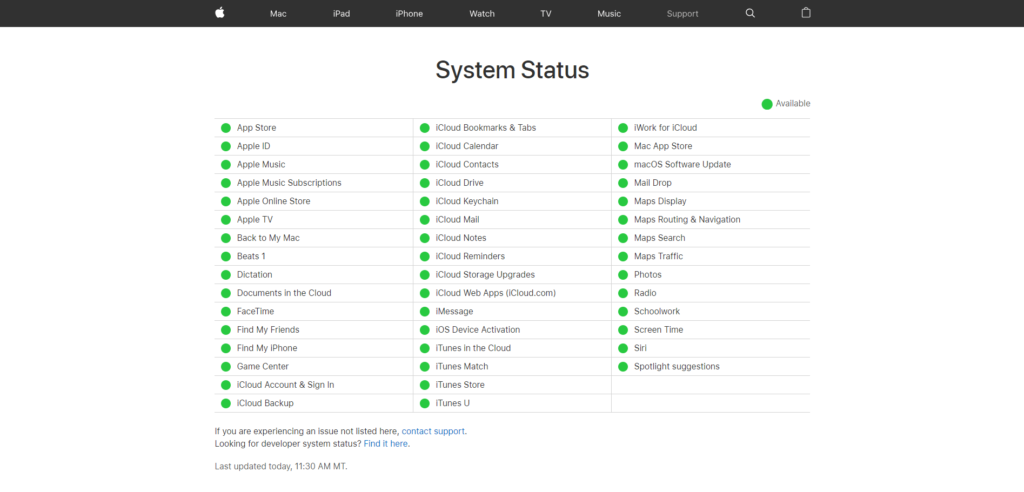
Here’s how to check for iCloud service outage:
- Go to Apple’s system status page.
- Browse through all services under the System Status section.
- See if the iCloud service is tagged green. If it is, it’s active.
- If the iCloud service is down, you can contact Apple Support to know more.
Often, service outage issues get resolved in a few hours. You can wait until iCloud is back up again. You can also check Google and social media platforms for updates. But if the service is active, then give our other troubleshooting methods a try.
2. Try to Sign Out and In.
In some cases, iCloud repeatedly pops up to ask for the user’s password. If that’s the case, one way to fix the issue is to sign out then back into your iCloud account.
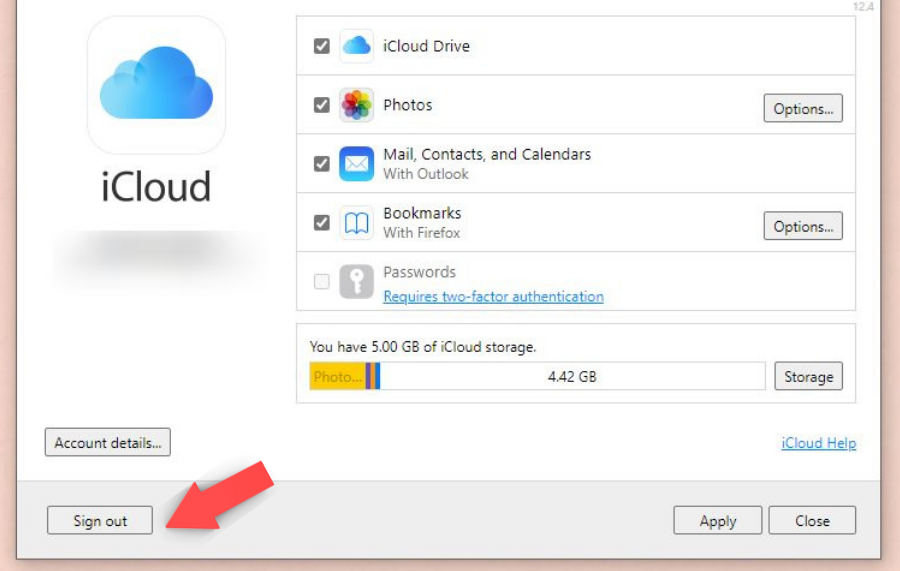
Here’s how to do this fix:
- First, launch iCloud for Windows.
- Next, click the Sign Out button.
- Then, restart your PC.
- Once your computer is back on, sign in to iCloud by entering your Apple ID.
This solution helped some users resolve the issue. But if you’re still looking for another way to fix iCloud that keeps popping up on Windows PC, try the next method.
3. Disable iCloud Notifications.
iCloud pushes out banner notifications if you’re about to run out of storage space. It’s vital to be alerted. But sometimes, these frequent notifications can be too distracting.
Luckily, Windows PC allows you to turn these notifications off easily. Of course, you have to deal with the storage problem eventually. But for now, you can get rid of these pesky alerts in just a few steps.
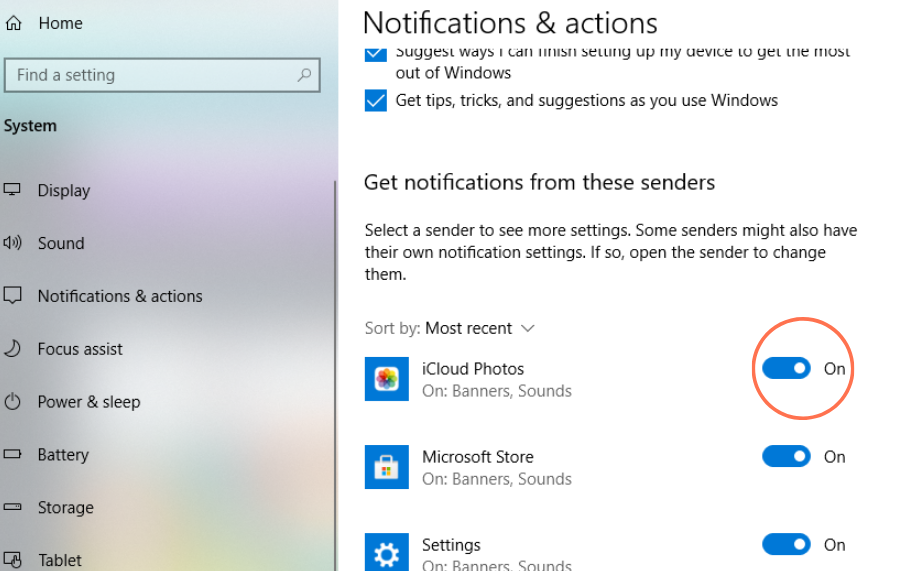
Here’s how to disable iCloud notifications on your Windows PC:
- First, click the Search icon on the bottom-left part of your Windows PC.
- Type “notifications” on the search box. Then, choose Notifications & actions settings.
- Scroll down to the Get notifications from these senders or Show notifications from these apps section. Find iCloud Services.
- Lastly, turn off the toggle button beside iCloud Services.
This should do the trick. But, again, if the annoying iCloud alerts that used to show up were due to a storage issue, you should fix it. See the next solution in this article.
4. Free Up Your iCloud Storage Space
iCloud offers 5 GB of free online backup storage. But that will be full in no time. You have several options to address this issue. Choose one or two that suit your situation.
Here are some ways to free up your iCloud storage space:
- Upgrade and buy more iCloud space.
- Be selective on the items you want to back up to iCloud. You can easily do this by going to iCloud settings. Uncheck biggies like movies, photos, and music. Only back up essentials like calendar entries, passwords, notes, and emails.
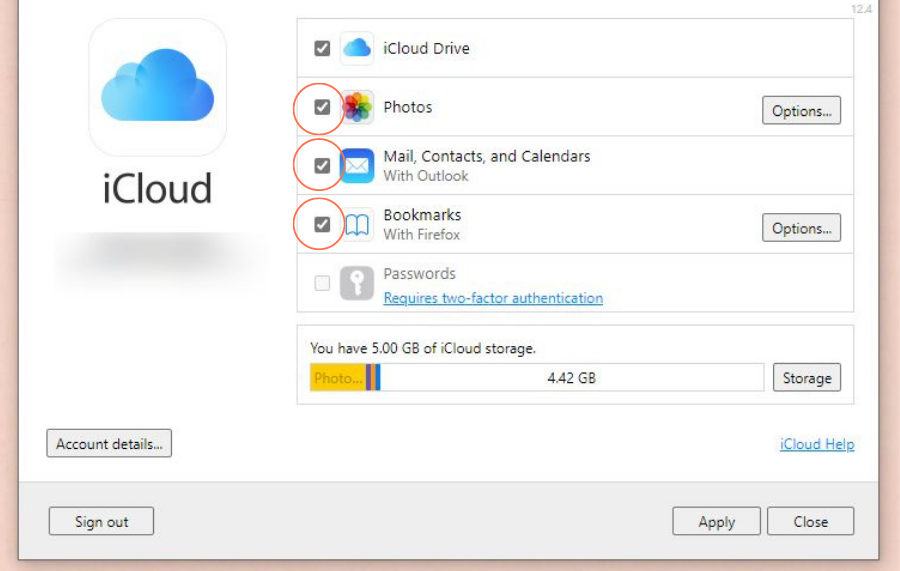
- Use My Photo Stream instead of iCloud Photos. It doesn’t require any space on iCloud. But photos are only backed up to iCloud for only up to 30 days.
- Consider using other free online storage services for some of your largest files. For instance, you can use Google Photos for your videos and images.
- Delete old backed-up files. You can easily do this by typing “iCloud Drive” or “iCloud Photos” on your computer’s search box. Click the folder you want to open (iCloud Drive or iCloud Photos). Browse through it to delete old files.
Typically, pesky storage alerts will no longer show up after you free up some space. But if the issue persists, scroll down to try other solutions.
5. Verify Apple ID Payment Details.
Do you already have an upgraded iCloud storage? The issue of annoying iCloud sign-in or warning pop-ups may be due to payment details. Try to verify your card details.
You can easily verify your Apple ID payment details on the iCloud app. Follow the steps below to perform this solution.
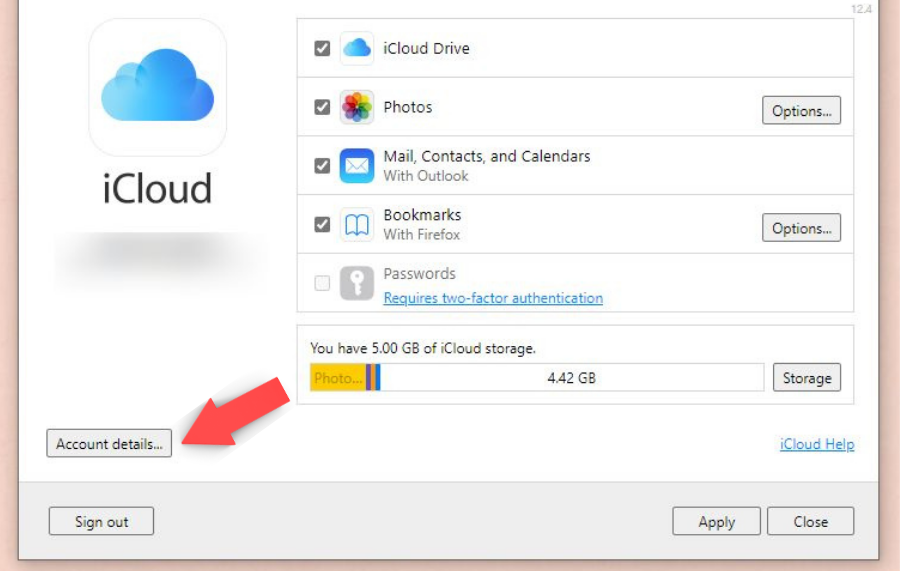
Here’s how to verify your payment details on iCloud for Windows:
- Open iCloud for Windows.
- On the bottom-left part, you’ll see Account Details. Click it.
- Then, select Manage Apple ID. This action leads to a browser window opening.
- On the browser, sign in with your Apple ID. If you’re asked to verify your Apple ID, follow the on-screen instructions. Otherwise, proceed to the next step.
- Go to the Payment & Shipping section. Choose Edit. (Note: If you’re a Family Sharing account user, and your group activated purchase sharing, the family organizer is the only one who can update the payment information.)
- Update your payment details.
- Hit Save.
This should fix iCloud that keeps popping up on Windows PC. But if this doesn’t work, we still have more tricks up our sleeves.
6. Run Your iCloud as Administrator.
How did you open iCloud on your computer? Did you just double-click it? If yes, this could be the culprit. When iCloud for Windows doesn’t have admin rights, it will ask for password verification over and over again. In turn, sign-in alerts keep on showing up.
If that’s the case, the solution is easy. All you have to do is give the iCloud app admins rights.
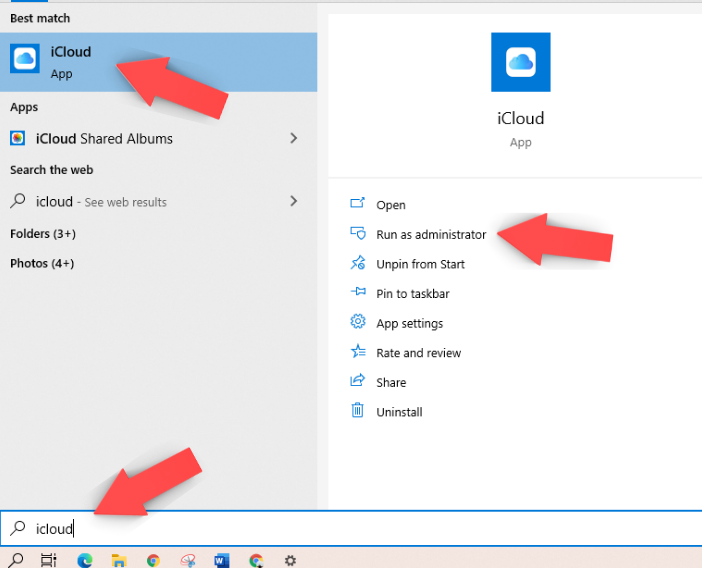
Here’s how to do it:
- Close the iCloud app.
- Click the Search icon at the bottom-left part of your computer. Type “iCloud” on the search box.
- Find the iCloud app on the list of results. Right-click the icon.
- Then, select Run as administrator.
Once the app is opened again, see if the pop-up issue still exists. If it is, we have a few more troubleshooting methods for you.
7. Re-Install iCloud for Windows PC.
Sometimes, re-installing the app can get the job done. Uninstalling iCloud can trigger the removal of bugs that have been causing unnecessary sign-in or storage alerts.
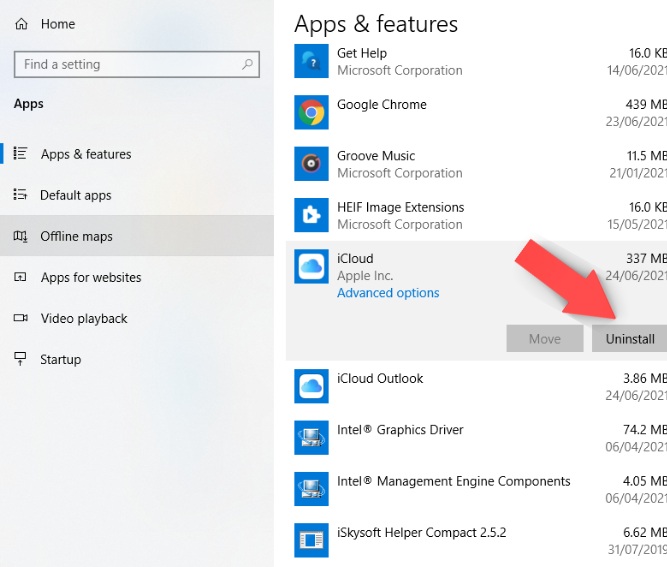
Here’s how to do it:
- Begin by launching the iCloud app. Click Sign Out.
- Next, click the Start button on your computer.
- Choose the Settings icon.
- Select Apps. Then, scroll down to find iCloud.
- Click iCloud and then hit Uninstall.
- Restart your computer.
- Download and install iCloud for Windows again.
- Lastly, sign in and see if the issue still exists.
At this point, you probably have resolved the problem. But if not, you can always do more troubleshooting methods below.
8. Solve the Outlook Conflict.
In some cases, a sign-in alert for iCloud keeps on popping up on Windows PC because of Outlook. It’s better to uninstall Outlook to avoid conflict. But if you need both apps, just make sure not to run the Outlook app with Administrative rights.
Another workaround is to stop syncing Mail, Contacts, Tasks, and Calendars between iCloud and Outlook. You have to tweak both apps to stop the sync between them.
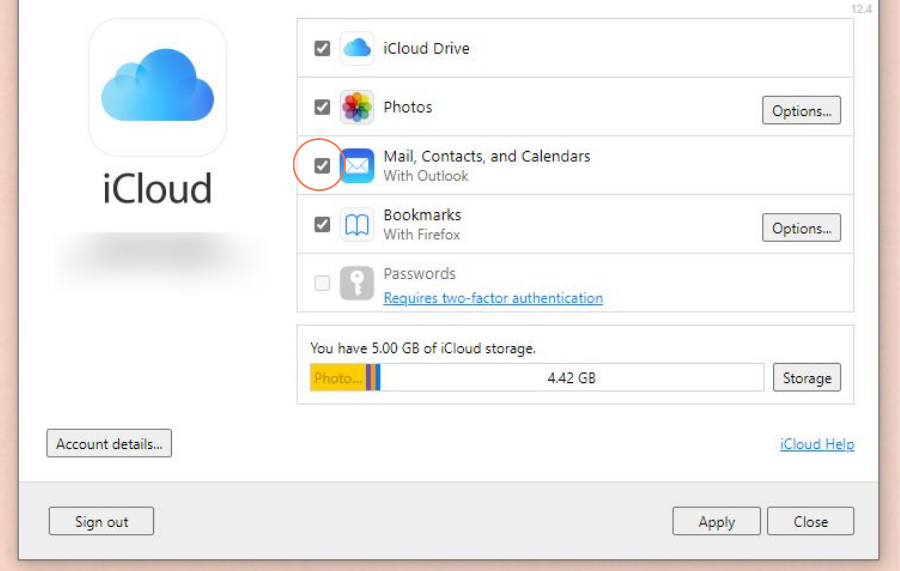
Here’s how to disable the sync between iCloud and Outlook.
- Open iCloud.
- Look for Mail, Contacts, and Calendars. Uncheck it.
- Click Apply to confirm the action.
- Next, launch Outlook.
- Under the File menu, click Options.
- Find and click the Add-ins tab. See if iCloud Outlook Add-in is there.
- If yes, choose COM Add-ins on the drop-down menu at the bottom. Then, click Go.
- The previous action will lead to a COM Add-ins box. Uncheck the iCloud Outlook Add-in. Or click iCloud Outlook Add-in and hit Remove on the right sidebar menu.
This should solve the issue of repeated iCloud sign-in alerts. If you still need another fix, we have one last troubleshooting method below.
9. Fix Socket Error.
Another possible reason behind repeated iCloud sign-in or password alerts is a socket error. Microsoft’s Windows use the Winsock protocol to communicate with other computers online. But some programs may cause Winsock to become corrupted.
Corrupted Winsock protocol files often lead to a socket error. This error means data sent over your network has not arrived in time. If this happens in your iCloud, it will keep on asking for your password even if you already keyed in the correct password.
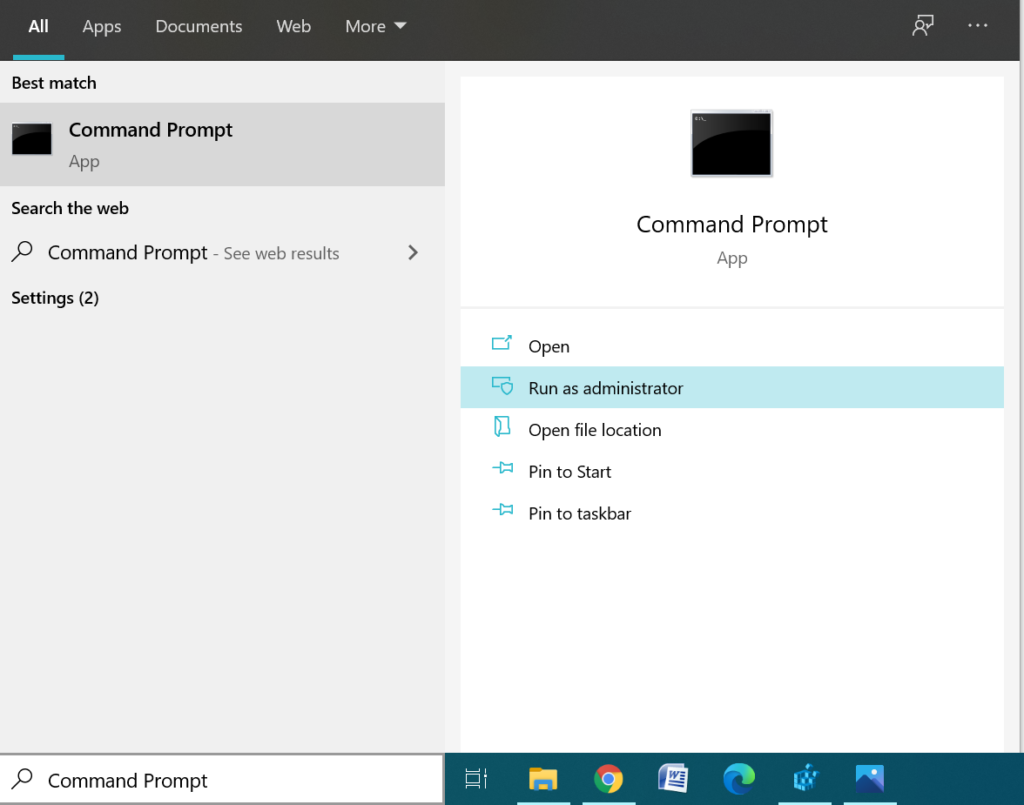
Here’s how to fix the socket error related to your iCloud:
- Open Search. Then type “cmd.”
- The Command Prompt will open.
- Type this command: netsh winsock reset.
This wraps up this article. We hope one or two of our solutions have helped fix your problem. If you have more questions or concerns, feel free to comment below. Our team is ready to offer you more troubleshooting tips for iCloud and other applications.





